Key takeaways
- Foam rolling enhances muscle recovery, flexibility, and reduces soreness, making it beneficial before and after workouts.
- Consistent foam rolling, particularly targeting tight areas like quads and calves, improves performance and prevents injuries during intense obstacle races.
- Incorporating foam rolling into a pre-race routine prepares muscles better than just dynamic stretching alone, leading to increased responsiveness and comfort during events.
- Post-race recovery is crucial; combining foam rolling with stretching and adequate rest accelerates muscle recovery and alleviates tightness.
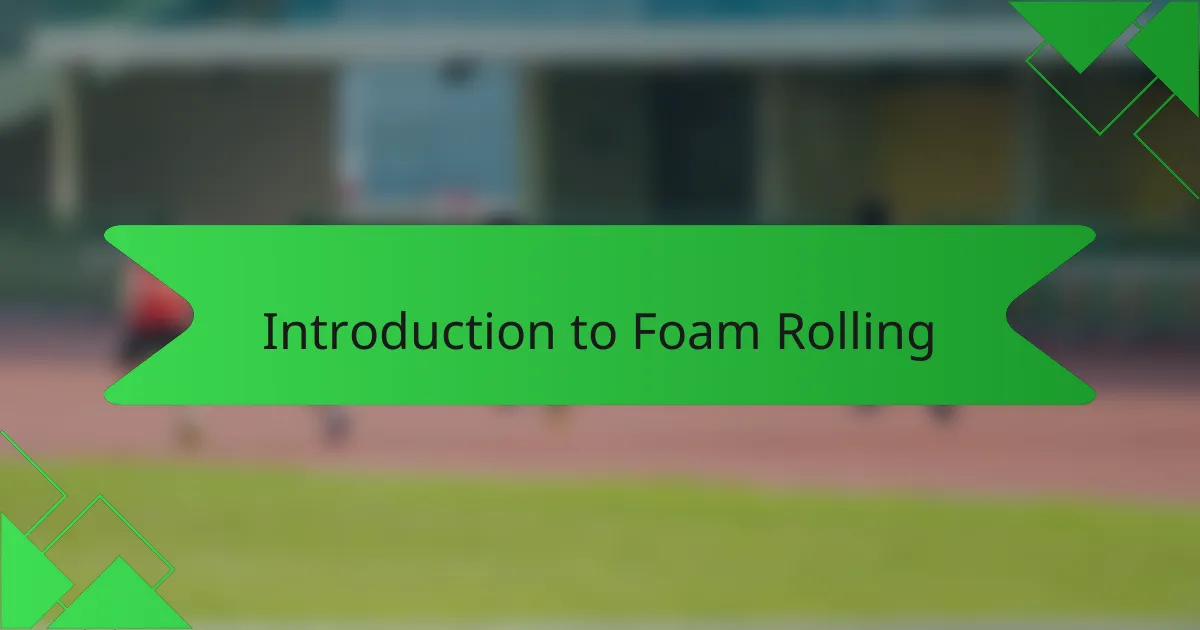
Introduction to Foam Rolling
Foam rolling quickly became an essential part of my training for Spartan races. At first, I was skeptical about rolling my sore muscles on a foam cylinder, but I soon discovered how much it helped with recovery and mobility. It’s like giving your body a deep tissue massage, but you’re in control of the pressure and location.
| Aspect | Foam Rolling |
|---|---|
| Purpose | Enhances muscle recovery and flexibility |
| How It Works | Self-myofascial release through pressure and rolling |
| Benefits | Reduces soreness, improves range of motion, prevents injury |
| When to Use | Before and after workouts or races |
| Personal Impact | Helped me push harder during training and recover faster post-race |

Benefits of Foam Rolling in Obstacle Racing
When I started foam rolling regularly, I found that my muscles felt less tight and I could move more freely during those grueling Spartan race workouts. Have you ever had that nagging stiffness that just won’t go away? Foam rolling helped me release those knots and improved my range of motion, making each obstacle feel a bit more manageable.
What surprised me the most was how much it cut down my soreness after intense training days. Instead of dreading the next session because of lingering pain, I felt ready to go again sooner. Isn’t it amazing how a simple routine can prevent injuries that could otherwise sideline your progress?
Foam rolling gave me a sense of control over my recovery process that I hadn’t experienced before. Knowing I could actively reduce muscle tightness meant I was more confident tackling tough obstacles. It’s like giving your body a tune-up before and after the race so you can perform at your best.
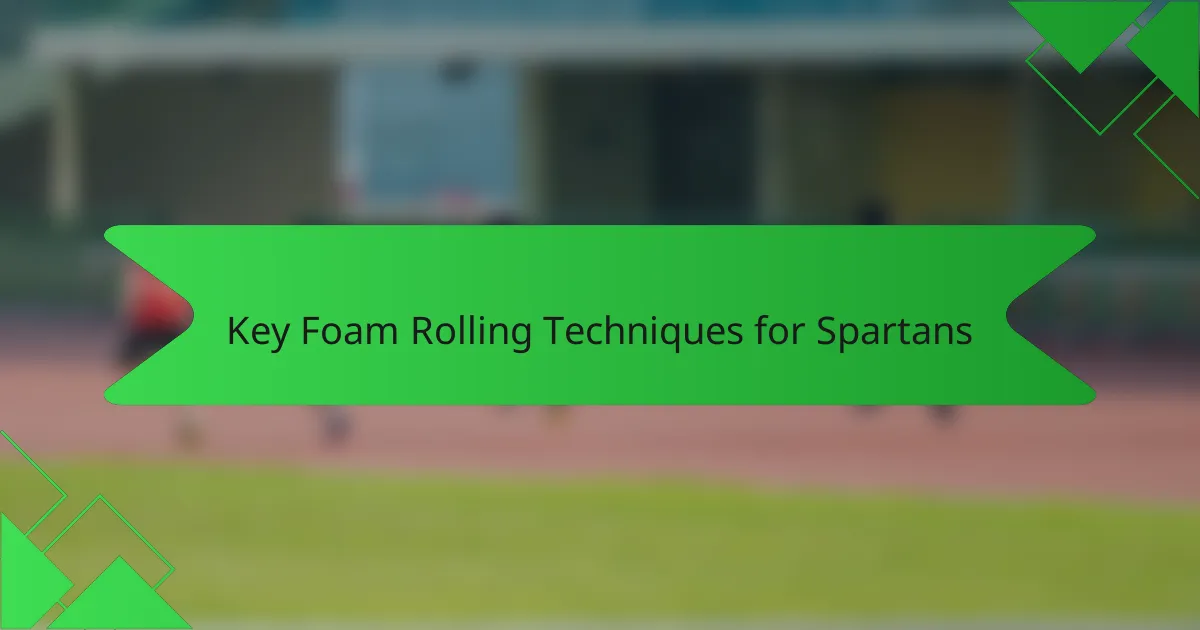
Key Foam Rolling Techniques for Spartans
One foam rolling technique I swear by is slow, deliberate rolling over tight spots, especially in my quads and calves. Instead of rushing through, I pause on those tender knots, letting the pressure do its magic. Have you tried holding the foam roller on a sore spot for 20 to 30 seconds? That stillness helps break up stubborn adhesions that can really hold you back on race day.
Targeting specific areas like the IT band and glutes also made a huge difference for me. I remember struggling with knee pain until I started rolling along the side of my thigh and hips—pain melted away over time. It’s amazing how focusing on those trouble zones can prevent aches that sneak up during intense obstacle runs.
Lastly, don’t underestimate the power of consistency. Rolling just a few minutes daily, both before and after training, transformed my recovery game. I noticed my muscles felt looser, and my body was primed to tackle Spartan challenges head-on. When you commit to these simple techniques, it’s like giving yourself an edge that few competitors use. Why wouldn’t you want that advantage?
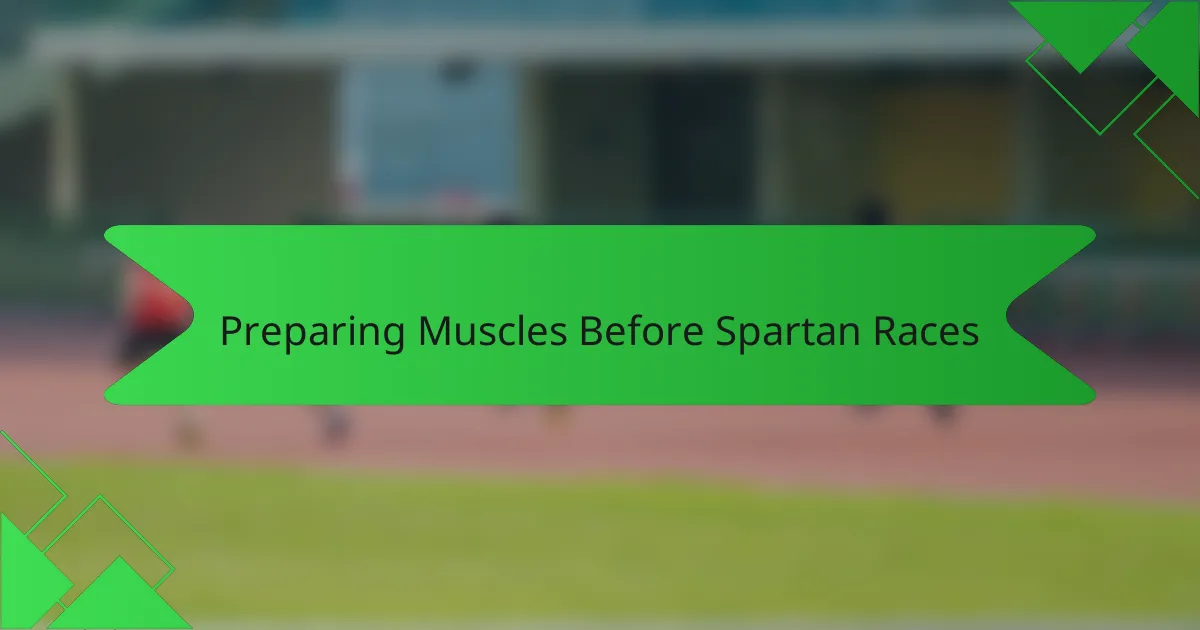
Preparing Muscles Before Spartan Races
Preparing muscles before Spartan races is crucial, and foam rolling has been a game changer for me. I noticed that when I spent a few extra minutes rolling out my quads and calves, my muscles felt looser and more responsive during the race. It’s like giving your body a gentle wake-up call, reducing stiffness and helping me avoid that tight, uncomfortable feeling mid-course.
From my experience, foam rolling before a race feels different than warming up with dynamic stretches. It targets specific muscle knots and areas of tension that stretches often miss. This combination of foam rolling and light movement pre-race made a noticeable difference in my overall performance and recovery afterward.
| Aspect | Foam Rolling | Dynamic Stretching |
|---|---|---|
| Purpose | Releases muscle knots and increases blood flow | Increases range of motion and activates muscles |
| Feel | Can be intense, targeting sore areas | More fluid and movement-based |
| Timing | Best done 5-10 minutes before race | Ideal immediately before race for activation |
| Effect on Performance | Reduces muscle stiffness and potential cramps | Prepares muscles for explosive movement |
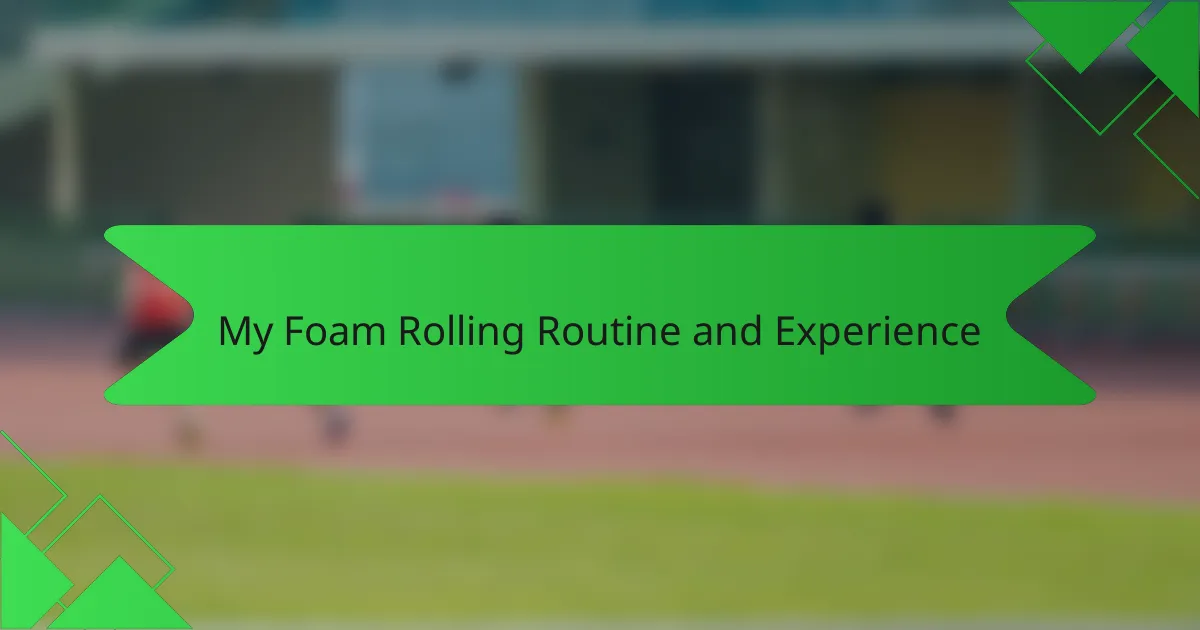
My Foam Rolling Routine and Experience
My Foam Rolling Routine and Experience
After my first grueling Spartan race, I quickly realized that foam rolling wasn’t just a nice-to-have; it was essential. Initially, I was skeptical about how much a simple foam roller could impact my recovery and performance. But incorporating a short daily routine transformed my muscle soreness and fatigue, especially in my calves and quads, which always took the hardest hits during obstacle courses.
I usually start foam rolling right after my warm-up and again before bed. Here’s how I structure my sessions to target race-specific muscle groups effectively:
- Spend 1-2 minutes on calves, slowly rolling up and down to ease tightness.
- Focus 2-3 minutes on quads, pausing on any knots or tender areas.
- Roll my hamstrings for about 2 minutes, varying pressure by adjusting body weight.
- Spend extra time on my IT band, which always felt stubborn and tight after long runs.
- Finish with gentle rolling on my glutes and lower back to relieve tension and improve mobility.
This routine became my go-to because I noticed how much better my legs felt before and after tough training days—like I was actually helping my body heal faster, not just pushing through the pain. It’s amazing how a few focused minutes can make such a difference in preparing for the next brutal Spartan challenge.
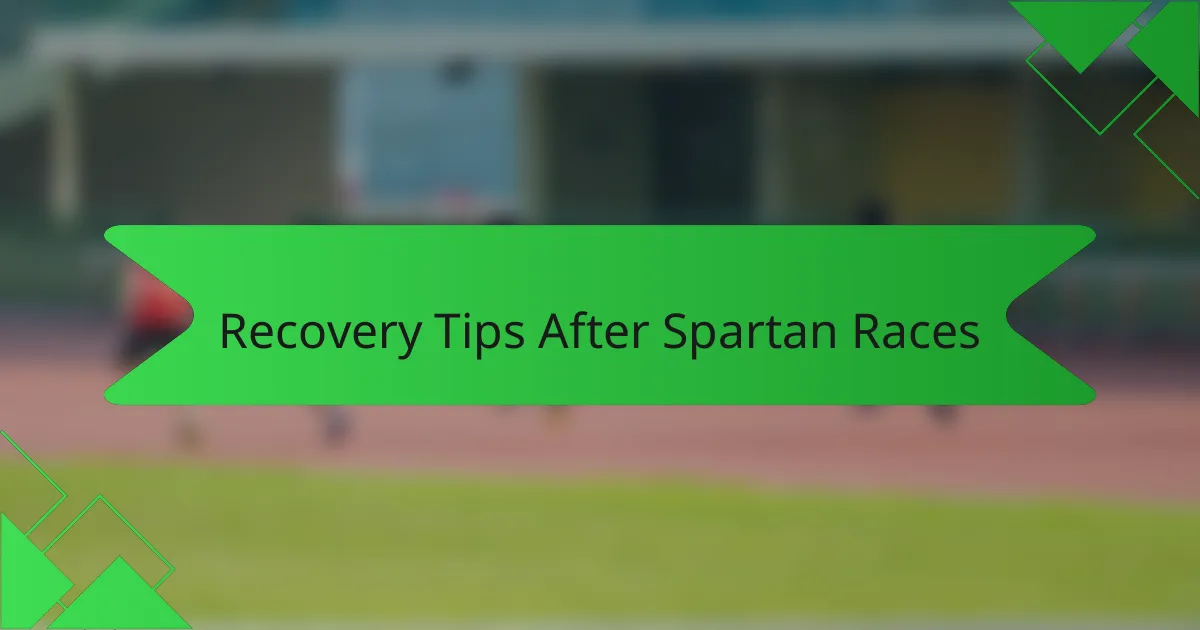
Recovery Tips After Spartan Races
After crossing the finish line of a Spartan race, my body always screamed for relief. What helped me most was prioritizing recovery right away—things like gentle stretching, rehydrating with electrolytes, and yes, foam rolling. Have you ever noticed how skipping out on proper recovery just drags soreness out longer? I learned the hard way that the sooner I start rolling and stretching, the quicker I bounce back.
Sleep is another underrated recovery hero. After one brutal race, my muscles felt like they’d gone through a blender, and only a solid night’s rest allowed me to wake up feeling human again. Pairing rest with targeted foam rolling really reduced stiffness over the following days. It’s almost like the combo worked as a reset button for my body.
Finally, I can’t stress enough how listening to your body informs recovery choices. Sometimes I needed an easy walk, other times complete rest, but foam rolling was a constant companion that sped up muscle release. Have you ever felt that stubborn tightness that just won’t go away? Trust me—the focused pressure from foam rolling helped me untangle those knots and get back on track faster than passive approaches alone.
